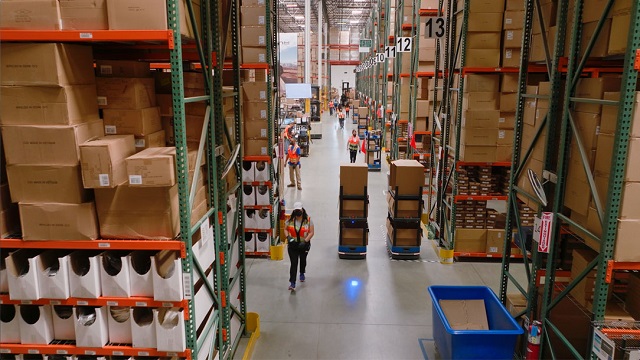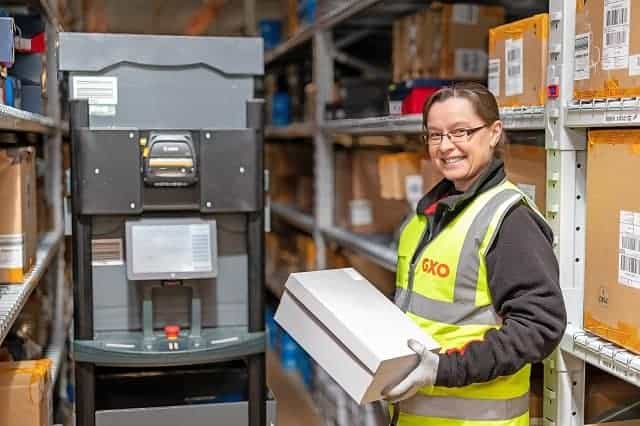Maintaining proper inventory levels is critical if you want to keep your customer satisfaction rates high. But it’s challenging when you’re using manual or outdated processes.
The average American retailer has an inventory accuracy rate of 63%. And another 34% of businesses ship orders late due to out-of-stock issues.
The answer to these problems? Using the right inventory replenishment methods.
This requires implementing rules (or processes) that help businesses identify when a product needs restocking (before it runs out). These rules and processes are also used to determine how much stock to add to your inventory by reordering and how much back stock to move to your active inventory.
Effective inventory replenishment requires careful planning using demand forecasting, inventory analysis (i.e., loss due to damage or going bad) and other supply chain metrics such as in-stock status and product velocity (the rate at which an SKU sells).
The key is to find the sweet spot where you have enough inventory to meet demand (without the risk of stockouts), while also avoiding overstocking items that either won’t sell at all or won’t sell fast enough to maximize your profits. Let’s take a look at four inventory and stock replenishment methods you can try.
Four inventory replenishment strategies

There are four main inventory replenishment methods businesses use. Let’s review each method and how it works.
Reorder point strategy
If you use the reorder point strategy, you select a stock level that signals when it’s time to reorder inventory. For instance, if you stock 1,000 pillows, you may set your reorder point to when 200 pillows remain in your inventory.
Now that you have your minimum, you need to set a maximum inventory level to prevent overstock. Inventory levels are continuously reviewed to trigger replenishment (either re-ordering or re-stocking) when inventory falls below the minimum threshold.
When determining how much to reorder, take your minimum (200) and subtract it from your max (1,000), which results in an order quantity of 800 pillows.
You’ll need a robust IT system to be able to continuously monitor your inventory in real-time.
Periodic strategy
With the periodic strategy, inventory is replenished at specific intervals. For example, every three months, you look at the levels to see if they need replenishing. If the inventory levels are still fine, then you don’t reorder anything.
Even if your inventory runs out before that point, using a periodic strategy, you would not re-order until the cycle ends. Replenishment orders are placed only at the pre-determined review points.
Top-off strategy
The top-off replenishment strategy, also known as lean time replenishment, takes advantage of times when picking operations are slow to bring stock to acceptable levels in forward pick locations. During these down times, each fixed picking location is filled to capacity using minimum and maximum thresholds similar to the min/max replenishment strategy.
The top-off replenishment strategy works well for businesses that have short picking windows, such as those with high-demand, high-velocity SKUs. By taking advantage of slow demand periods to top off inventory levels in forward pick locations, this strategy helps to improve efficiency during peak periods.
Demand strategy
Many businesses use the demand strategy for inventory replenishment. It’s simple and straightforward: replenishment is based on demand. Restocking or reordering is limited only to what’s needed to fill orders.
This, too, requires careful planning to ensure you’re prepared for future demand fluctuations.
You’ll need to have a safety stock to make your business agile enough to meet these changes in demand. Safety stock is a stock buffer that allows your business to adapt to random fluctuations in supply and demand, lowering the risk of stockouts if there’s a sudden spike in demand.
Lot-sizing methods

How does a business determine the best inventory numbers for a product? By determining an optimal lot size.
There are several inventory replenishment methods you can choose from. Lot-sizing methods are determined by the trade-off between the carrying costs of the SKU and the cost of ordering from the supplier. Businesses using periodic replenishment also need to consider the intervals between review points. For instance, if a business sells 600 pillows each month and uses periodic replenishment with a lot size of 300 every three months, inventory will run out before the next review point.
Here’s a look at the various lot-sizing methods:
- Fixed order quantity: A specific number of items ordered each time you reorder.
- Lot-for-lot: A set number of products are ordered to cover the demand within a specific time frame, taking lead time for orders into consideration. Lot-for-lot is also known as discrete order quantity.
- Economic order quantity (EOQ): Amount ordered based on the costs of carrying and ordering the product.
- Period order quantity: Based on EOQ, you can determine the fixed number of future periods the inventory will cover.
- Periods of supply: An amount of inventory that covers the demand for a product for a specific number of future periods (i.e., the next six months).
- Least unit cost: Ordering and inventory carrying costs are added to the cost for each lot size and the total is divided by the number of units. The lot size with the lowest per-unit cost is the quantity ordered.
- Least total cost: The order quantity is calculated by comparing the carrying costs and ordering costs for various lot sizes. The lot size with the closest (nearly equal) carrying costs and ordering costs is the quantity ordered.
- Part period balancing: The amount of inventory ordered is based on the total demand up to a time when the costs of carrying and ordering the item are most balanced. It involves calculating the Economic Part-Period, a standard value used for lot-sizing purposes, to determine when the cost of carrying accumulated inventory exceeds the cost of ordering. The order quantity is based on avoiding these excess carrying costs by ordering the quantity needed to meet demand until that point is reached.
Not every inventory replenishment method works for every business. The reorder point strategy may work better for a business with many high-velocity SKUs or SKUs with fluctuating demand. Companies with predictable demand cycles may find that the periodic replenishment strategy meets the company’s needs. Some companies use a combination of different replenishment methods for different product lines, or they may shift to a different method during peak demand periods.
Choosing the right replenishment strategy for your business is important for maintaining lean, agile operations, but you also need a way to pick and pack orders efficiently. That’s why many warehouses and distribution centers are turning to automation solutions like Chuck by 6 River Systems. Working alongside your warehouse associates, Chuck sets the pace for workers and keeps associates on-task to facilitate efficient order picking for stock replenishment orders, replenishing stock to active pick areas, and order fulfillment.
Interested in more? Let’s discuss the solution that’s right for you. Contact us today.


